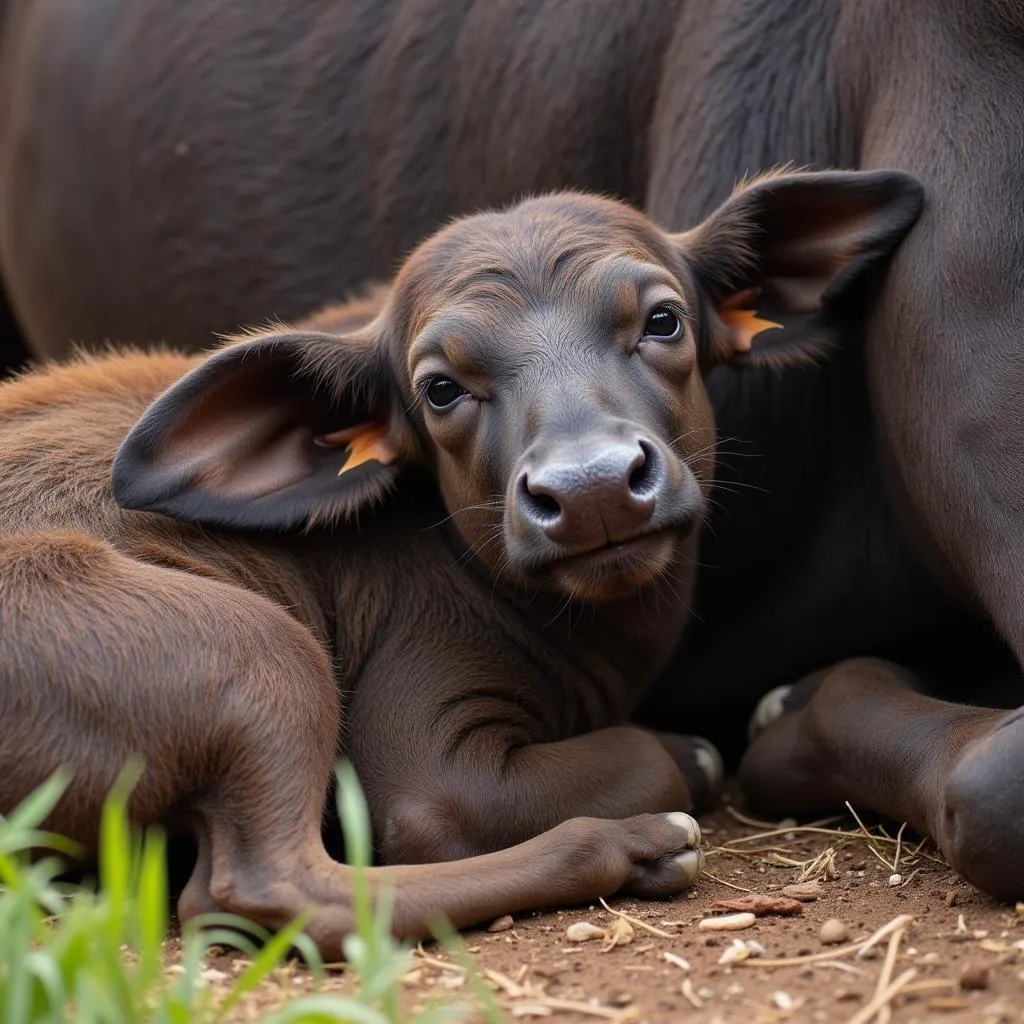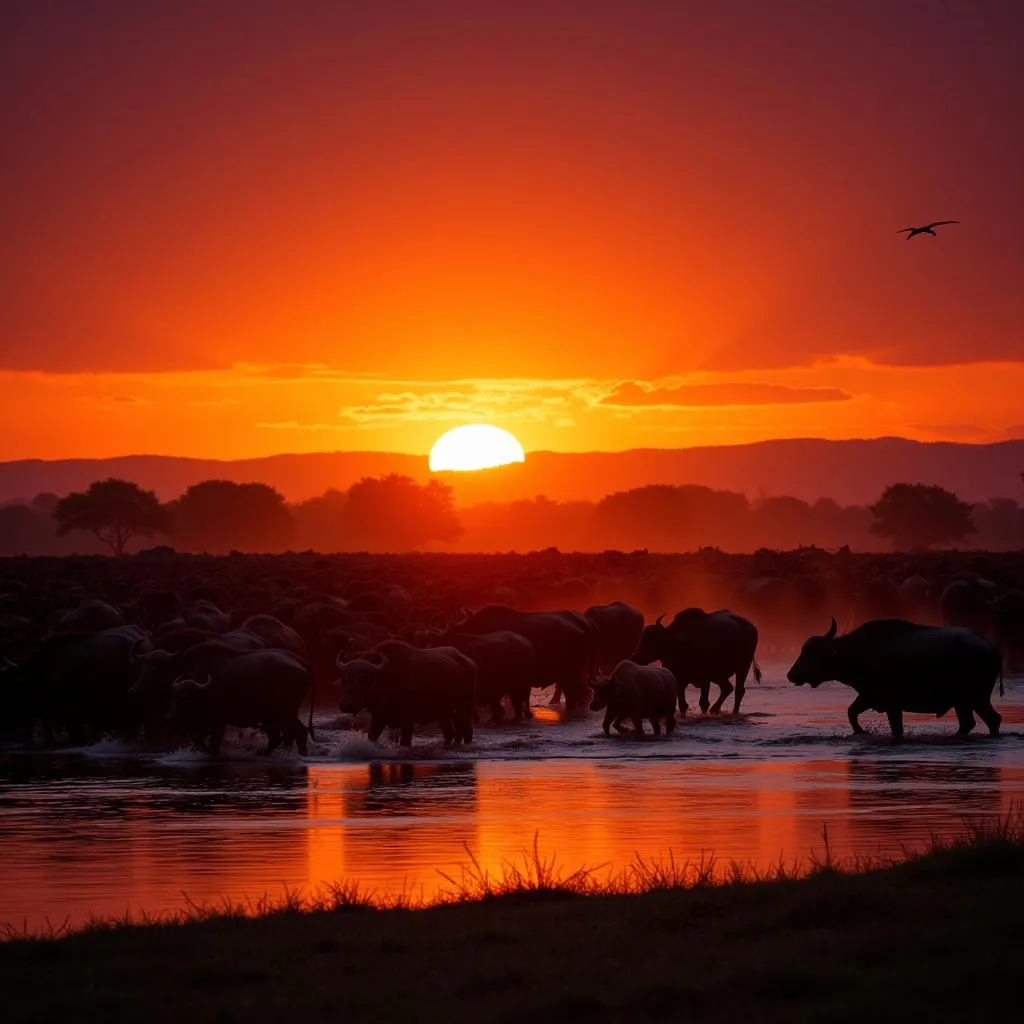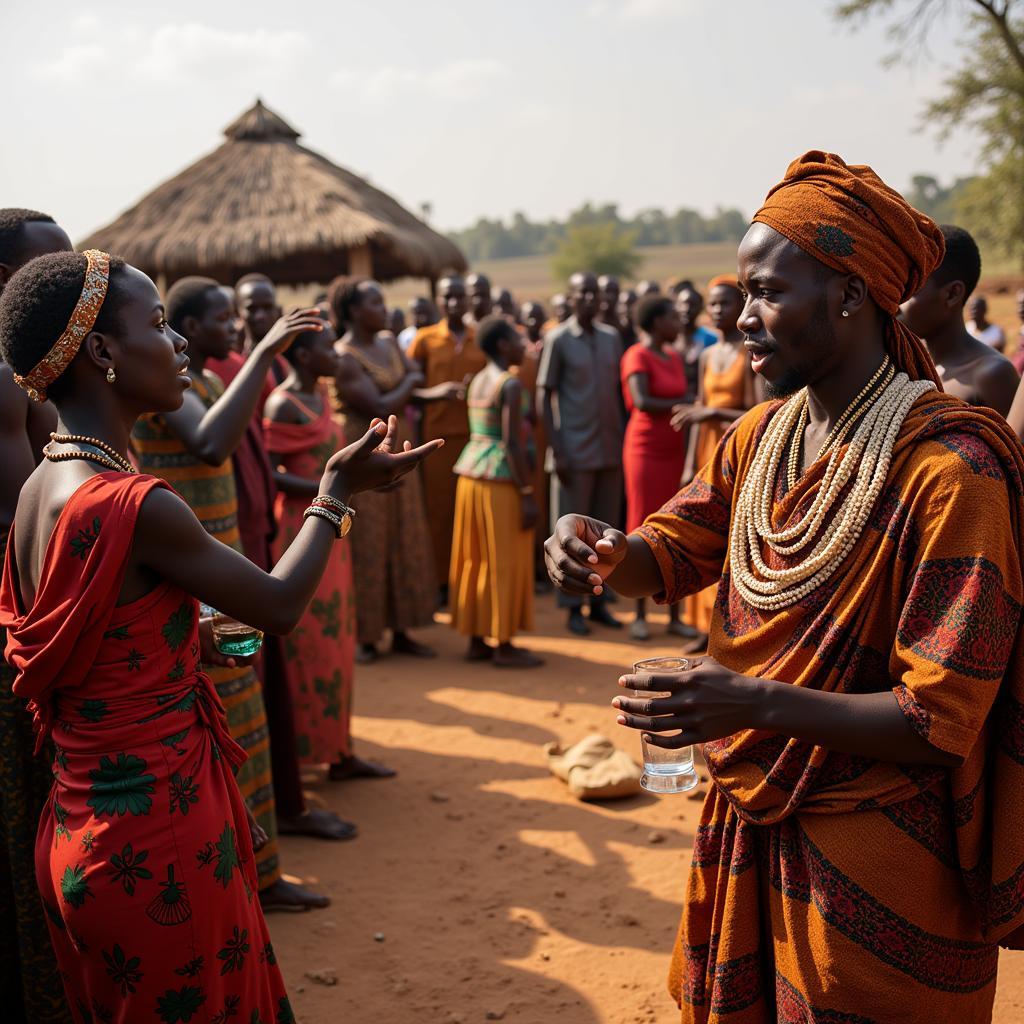African Buffalo: The Wild Bovine of the Savannah
The African buffalo, scientifically known as Syncerus caffer, is a powerful and iconic herbivore that roams the savannas, swamps, and forests of sub-Saharan Africa. Often referred to as the “black death” or “widowmaker” due to its unpredictable temperament and formidable strength, the African buffalo is a true testament to the raw power of the wild.
A Formidable Physique: Size and Appearance
African buffalos are massive creatures, easily recognizable by their imposing size and unique features. Bulls (males) typically weigh between 600-1,000 kg (1,300-2,200 lbs), while cows (females) are slightly smaller, ranging from 500-700 kg (1,100-1,500 lbs). Their robust bodies are covered in sparse black or dark brown hair, becoming more pronounced in older individuals. One of their most striking features is their large, curved horns, which form a characteristic “boss” – a fused shield of bone – across the top of their heads. This bony shield acts as a natural helmet, protecting their skulls during head-to-head combat with rivals or predators.
More Than Meets the Eye: Subspecies and Distribution
While the image of the African buffalo often conjures up visions of vast savannas, their distribution and adaptability are quite remarkable. There are several recognized subspecies of African buffalo, each adapted to their specific habitats. The Cape buffalo, found in southern and East Africa, prefers open grasslands and savannas, while the forest buffalo, inhabiting the dense rainforests of Central and West Africa, is smaller and has adapted to navigate dense vegetation.
A Social Life: Herds and Social Dynamics
 African Buffalo Calf Seeking Protection from its Mother
African Buffalo Calf Seeking Protection from its Mother
African buffalos are highly social animals, living in large herds that can range from a few dozen to several hundred individuals. These herds are typically led by an older, dominant bull, with the hierarchy maintained through elaborate displays of dominance and occasional sparring matches. The social structure within a buffalo herd is complex, with strong bonds between females and their offspring.
The Circle of Life: Diet and Predators
As herbivores, African buffalos play a crucial role in their ecosystem. Their diet consists mainly of grasses, but they will also browse on leaves, fruits, and bark, especially during the dry season. Their grazing habits help to shape the landscape and influence the distribution of other plant and animal species. While adult African buffalos have few natural predators due to their size and defensive capabilities, young calves are vulnerable to attacks from lions, leopards, hyenas, and crocodiles.
The Human Element: Conservation Status and Interactions
 African Buffalo Herd Crossing a River at Sunset
African Buffalo Herd Crossing a River at Sunset
The conservation status of the African buffalo varies across its range. While some populations are relatively stable, others face threats from habitat loss, hunting, and disease. Human-wildlife conflict is a growing concern, particularly in areas where buffalo ranges overlap with agricultural land or human settlements.
Conclusion
The African buffalo, with its formidable presence, complex social structure, and ecological importance, stands as a powerful symbol of Africa’s wildlife. Understanding these creatures and the threats they face is crucial for their conservation and for maintaining the delicate balance of their ecosystems.
FAQs
-
Are African buffalos dangerous to humans? Yes, African buffalos are considered one of the most dangerous animals in Africa. They are known for their unpredictable temperament and can charge with great speed and force.
-
What is the average lifespan of an African buffalo? The average lifespan of an African buffalo in the wild is about 15-20 years.
-
How do African buffalos defend themselves? African buffalos rely on their size, strength, and sharp horns for defense. They will often charge at threats and can deliver powerful blows with their heads.
-
Where can I see African buffalos in the wild? African buffalos can be found in many national parks and reserves across sub-Saharan Africa, including the Serengeti National Park, Kruger National Park, and Chobe National Park.
-
What is being done to conserve African buffalos? Conservation efforts for African buffalos include habitat protection, anti-poaching patrols, and disease monitoring.
Need Help Planning Your African Safari?
Contact us today for expert advice and customized itineraries:
Phone: +255768904061
Email: kaka.mag@gmail.com
Address: Mbarali DC Mawindi, Kangaga, Tanzania.
Our team is available 24/7 to assist you!



